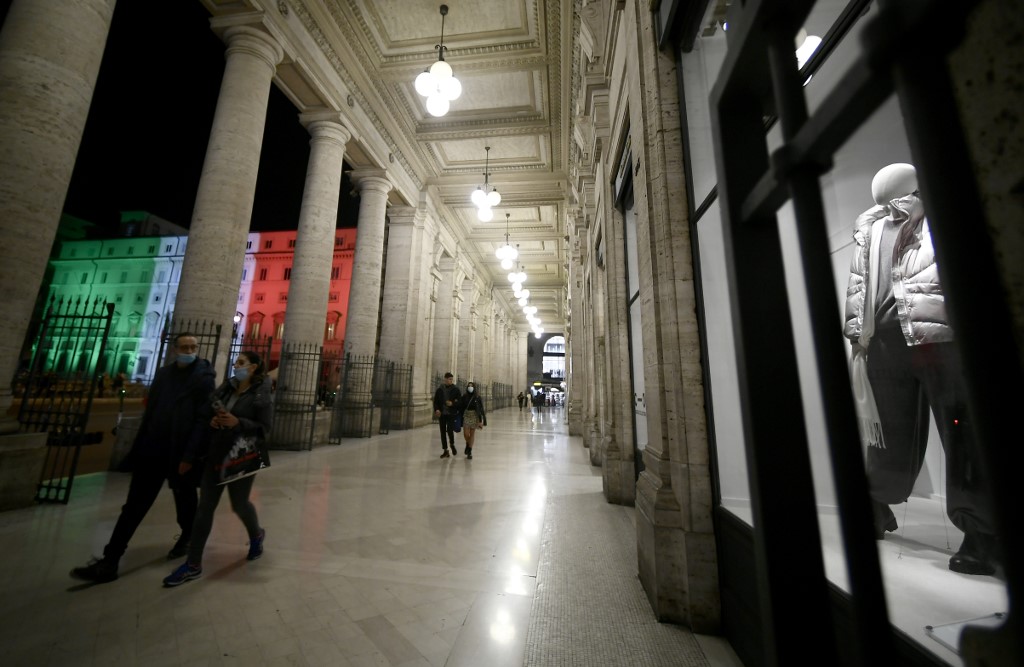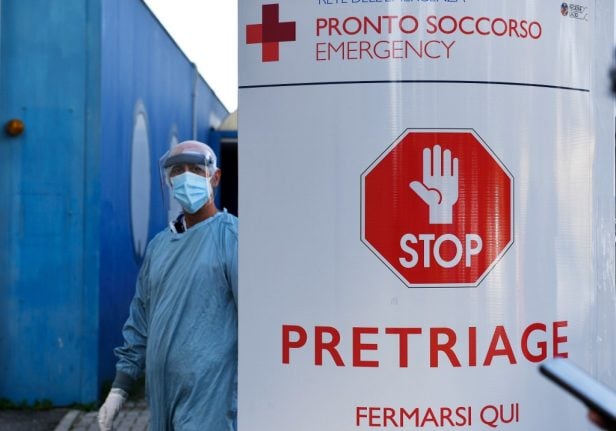Starting from Friday, November 6th, Italy's 20 regions will be divided into one of three tiers: red, orange or yellow, with Covid-19 restrictions varying according to which category each region is in.
Red zones (high risk) will have the strictest rules, while yellow zones (moderate risk) will only be subject to baseline restrictions ordered nationwide. Orange zones (medium-high risk) will fall between the two.
MAP: Which zone is your region in under Italy's new tier system?
Four regions have been declared high-risk red zones: Lombardy, Piedmont, Calabria and Valle d'Aosta.
Puglia and Sicily will become orange zones, while all other regions stay yellow – for now.
There was confusion and anger as Prime Minister Giuseppe Conte announced the classification on Wednesday night, with many wondering how regions with some of the lowest case numbers – Calabria and Valle d'Aosta – had ended up as red zones, while regions with many times more, including Campania, Lazio, Veneto, were classed as only moderate risk.
Most people here in Sicily are not happy with being an Orange Zone. My wife and I have mixed feelings since we are over 70 and high risk. We have already 90% self quarantined
— Jacob?? (@jacobLpeck) November 5, 2020
But the classification isn't made on case numbers alone.
It's based on 21 criteria established last month by Italy's Higher Health Institute (ISS) in a plan that lays out the various risk scenarios for the next few months and recommended strategies to deal with them.
In judging how dangerous the pandemic could prove in each region, the ISS says the government should consider not just how many people test positive but other factors that indicate how fit the region is to handle an outbreak, including how many beds local hospitals have and how well contact tracing is working.
Among the most important indicators are:
- Rt number (indicating how many people an infected person passes the virus onto, on average)
- Number of symptomatic cases
- Number of patients admitted to hospital and intensive care
- Percentage of intensive care beds occupied by Covid-19 patients
- Test positivity rate (percentage of all tests coming back positive)
- Time between onset of symptoms and date of diagnosis
- How many personnel are involved in contact tracing, testing and monitoring
- What percentage of positive cases are subject to a full contact-tracing investigation
- Number of new clusters (defined as two or more linked cases or a sudden outbreak in the same location)
- Number of infections not traceable to a known chain of transmission
Nor does the classification reflect the latest data, as several critics have objected.
The government based its initial classification on the ISS's most recent weekly report, which refers to figures from October 19-25th.
The complexity of the calculation makes it difficult to predict how the zones will change as the situation evolves and the health ministry reassesses its classification.
The Ministry of Health will be responsible for updating the zones “at least weekly”, according to the latest emergency decree (DPCM, decreto del Presidente del Consiglio dei ministri or 'prime minister's decree') signed on November 3rd.
The decree also states that any region designated a red zone must remain under maximum restrictions for at least 15 days before the government even considers relaxing the rules.
MORE ON THE LATEST RULES:
- The form you need to go out at night under Italy's national curfew
- Which schools stay open under Italy's new emergency measures?
- Where to find the latest Covid-19 information for your region of Italy

Photo: Filippo Monteforte/AFP
It's unclear how much say regional authorities now have.
Under Italy's ongoing state of emergency regional governors were given powers to issue sweeping local ordinances that go above and beyond national restrictions, and used them to do everything from declaring curfews to closing schools and restricting travel. Meanwhile others resisted taking tougher measures likely to prove unpopular.
The tier system means the decision could to some extent be taken out of their hands.
Yet while Prime Minister Giuseppe Conte originally said the classification and ensuing rule changes would be automatic, based entirely on each region's “risk coefficient” calculated using the ISS's formula, after meetings with governors the text of the new decree now states that restrictions will be imposed “in agreement with the president of the region”.
The regions have also requested that their own local health authorities be allowed to challenge the national government's calculations before they trigger new restrictions.
In a joint statement, the governors expressed concern that the system would encroach on their powers and hand too many decisions to the national government and the technical bodies carrying out the risk assessment.
It's possible that regions will declare localised red zones within their own territory, as the autonomous province of Bolzano (Alto Adige/South Tyrol) has already done with 11 municipalities, including its biggest city of the same name. The move wasn't required by the national government, which designated the entire Trentino-Alto Adige region a yellow zone.
Meanwhile Campania – which on Wednesday reported over 4,000 more infections, the most of any region except Lombardy – will effectively loosen its rules under the new classification.
The region had imposed some of the toughest restrictions of anywhere in Italy, including closing all schools and limiting travel between provinces, but will now revert to less constrictive national measures.



 Please whitelist us to continue reading.
Please whitelist us to continue reading.
Member comments